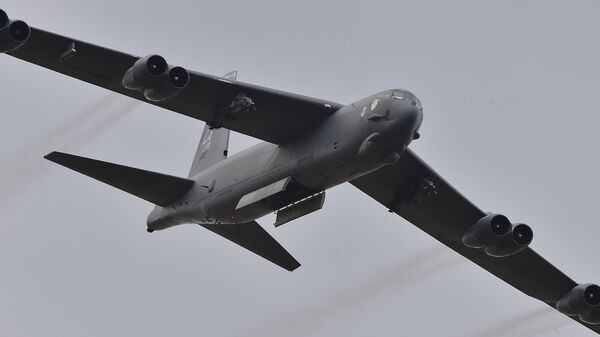A US B-52H Stratofortress strategic bomber has carried out a simulated bombing of the Russian Baltic Fleet’s base in the exclave of Kaliningrad, aircraft monitoring resource PlaneRadar has reported, citing tracking data.
15:40 мск.
— PlaneRadar (@ua4wiy_) 23 октября 2019 г.
Стратегический бомбардировщик #Boeing B-52H Stratofortress ВВС США🇺🇸( 2BW | 20BS), бортовой номер 61-0025, позывной #BRIG01, взлетевший с авиабазы Файрфорд🇬🇧 RAF #Fairford (#ICAO: #EGVA) выполняет отработку бомбардировки базы балтийского флота.#USAF #B52 pic.twitter.com/3lJUP6NZkI
Tweet reads: “15:40 Moscow Time. US Air Force Boeing B-52H Stratofortress strategic bombers, tail number 61-0025, call sign #BRIG01, took off from the RAF Fairford airbase is carrying out simulation of the bombing of the Baltic Fleet’s base.”
The resource’s map shows the bomber flying through the Baltic Sea, turning southeast into Lithuanian airspace, and approaching to within about 45 km of the Russian exclave to its east, over the Lithuanian town of Marijampole.
A day earlier, Russia’s Defence Ministry revealed that an Aerospace Defence Forces Su-27 scrambled from a base in Crimea to escort a B-52H which approached Russian borders in the Black Sea, with the jet reportedly shadowing the bomber at a distance of 70 km before returning to base.
The US Air Force deployed a task force of four B-52s and about 350 airmen at RAF Fairford earlier this month, with the bombers ordinarily based at the Barksdale Air Force Base in Louisiana, about 8,650 km from Russia’s Kaliningrad.
The US and its NATO allies regularly send bombers, reconnaissance aircraft and drones east to test Russia’s borders in the Baltic and Black Seas, and near the Russian airbase in Syria. In 2018, Russia’s air defence troops reported tracking nearly 3,000 foreign military aircraft. In addition to the flights, NATO has substantially increased its military footprint near Russia’s borders since the 2014 Ukraine crisis, conducting drills in the region and increasing the number of foreign troops permanently deployed in the Baltic countries, Poland and Romania. Moscow and its allies have repeatedly expressed concerns about the NATO buildup, with officials warning that such incidents increase the risk of escalation into a full-blown military conflict.



